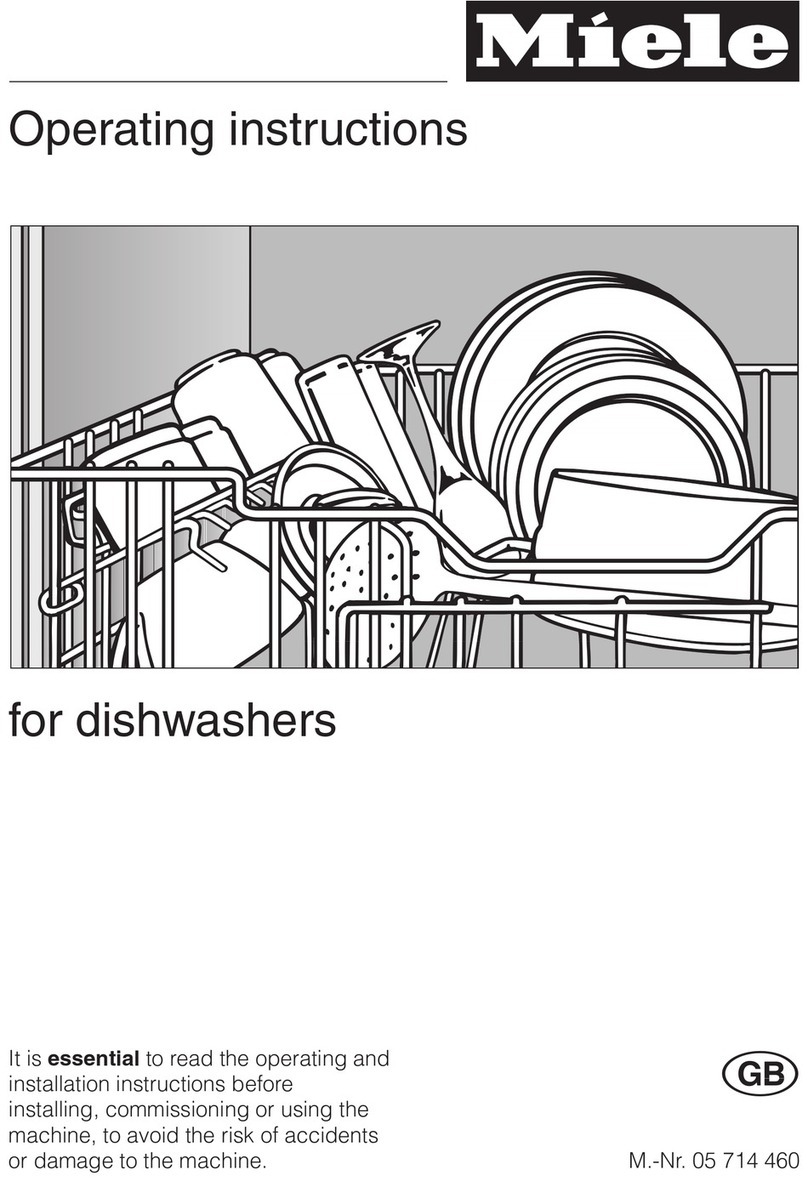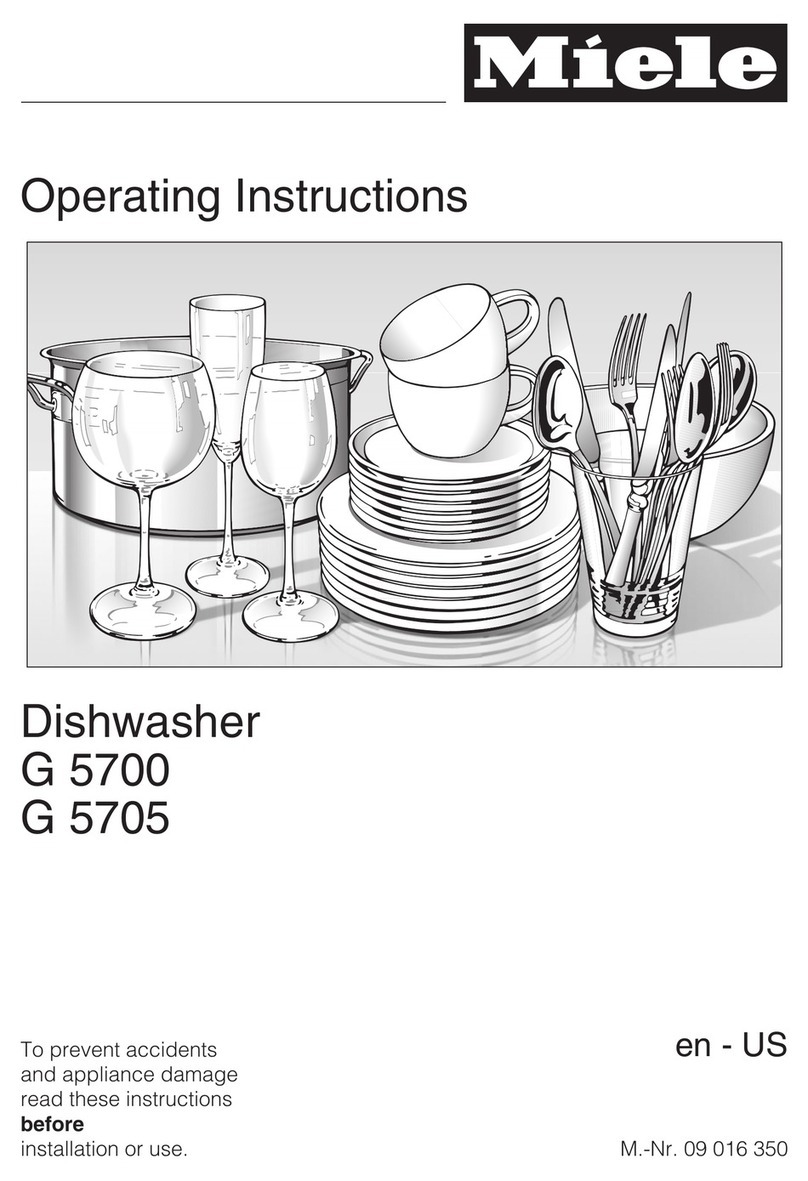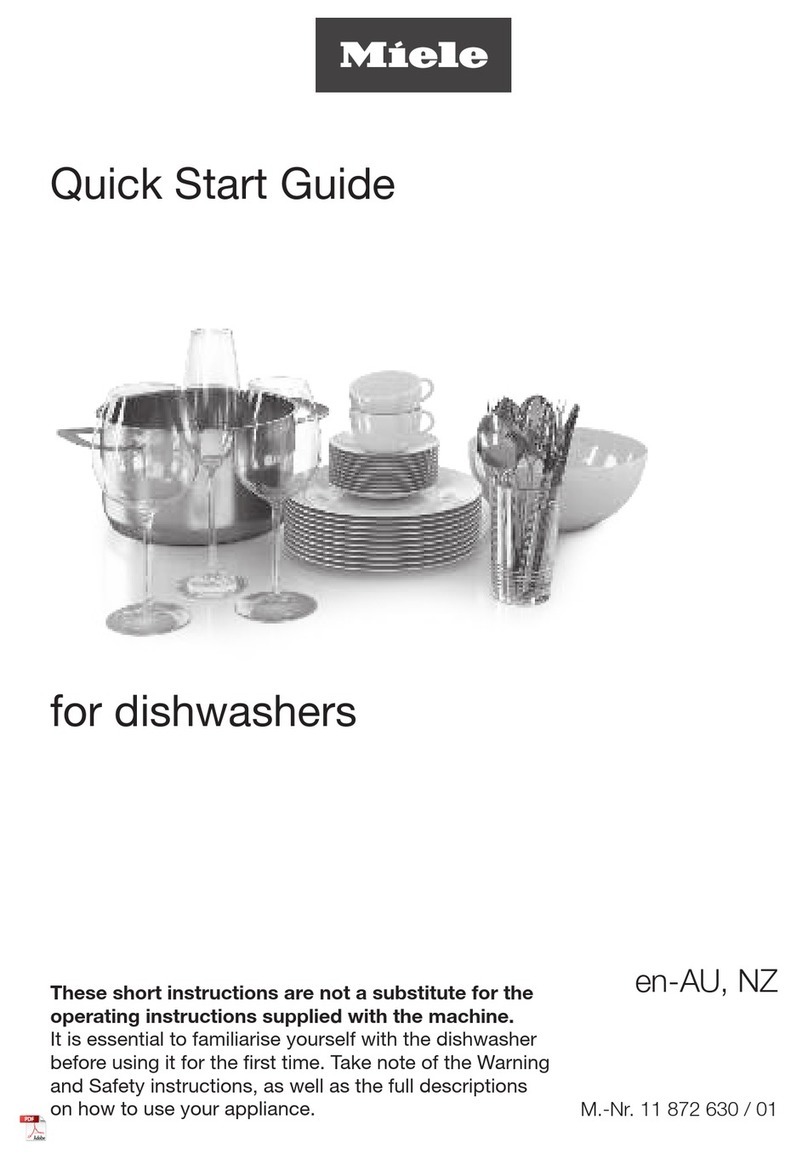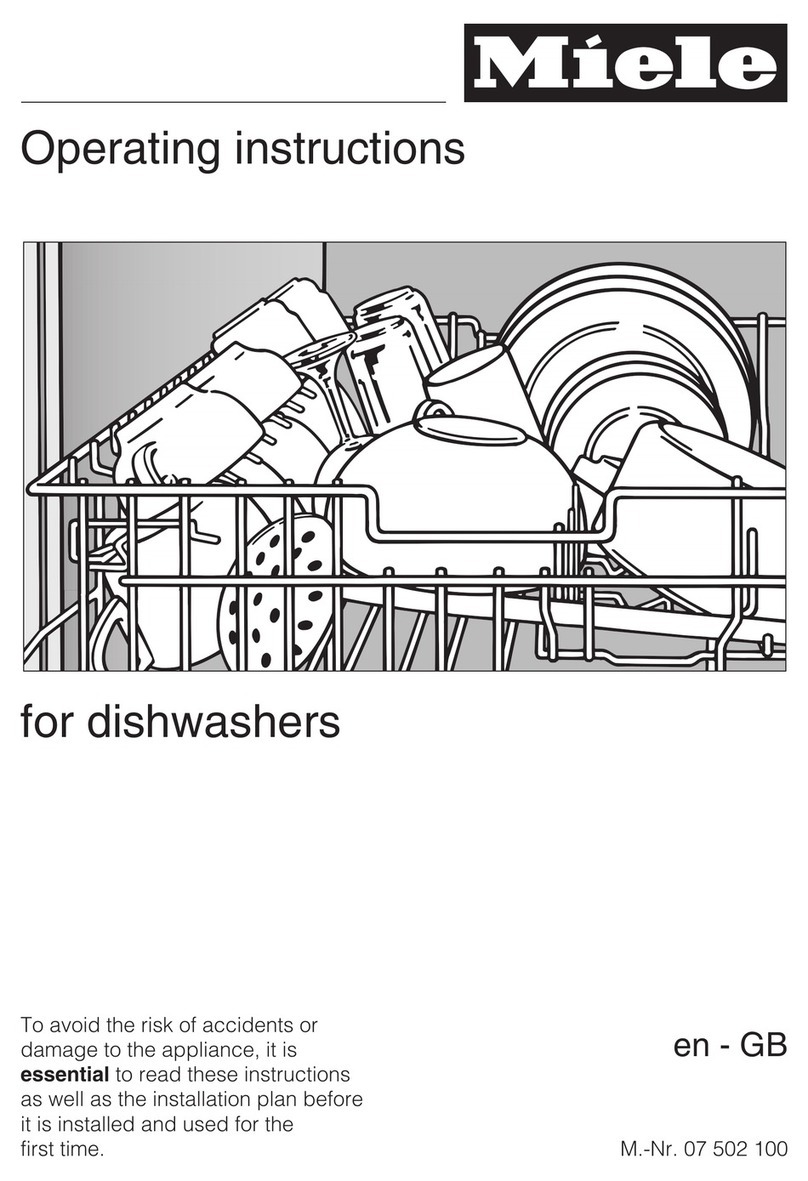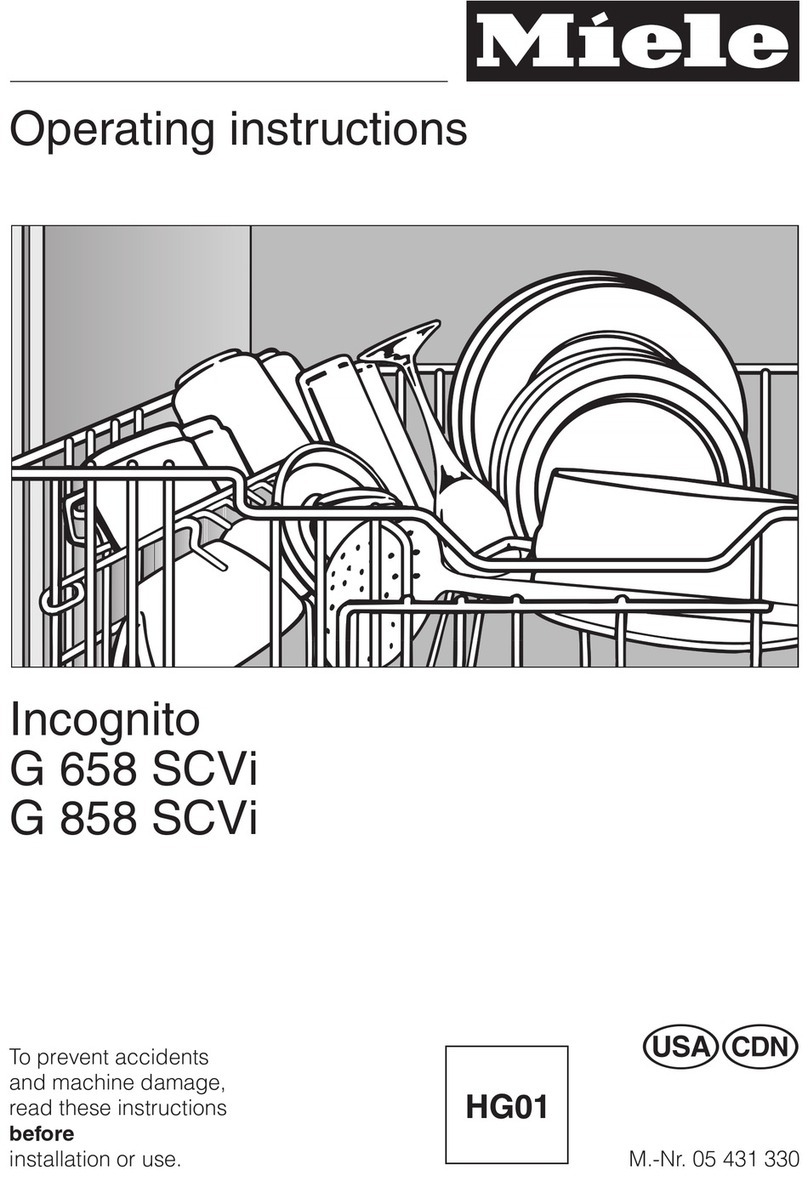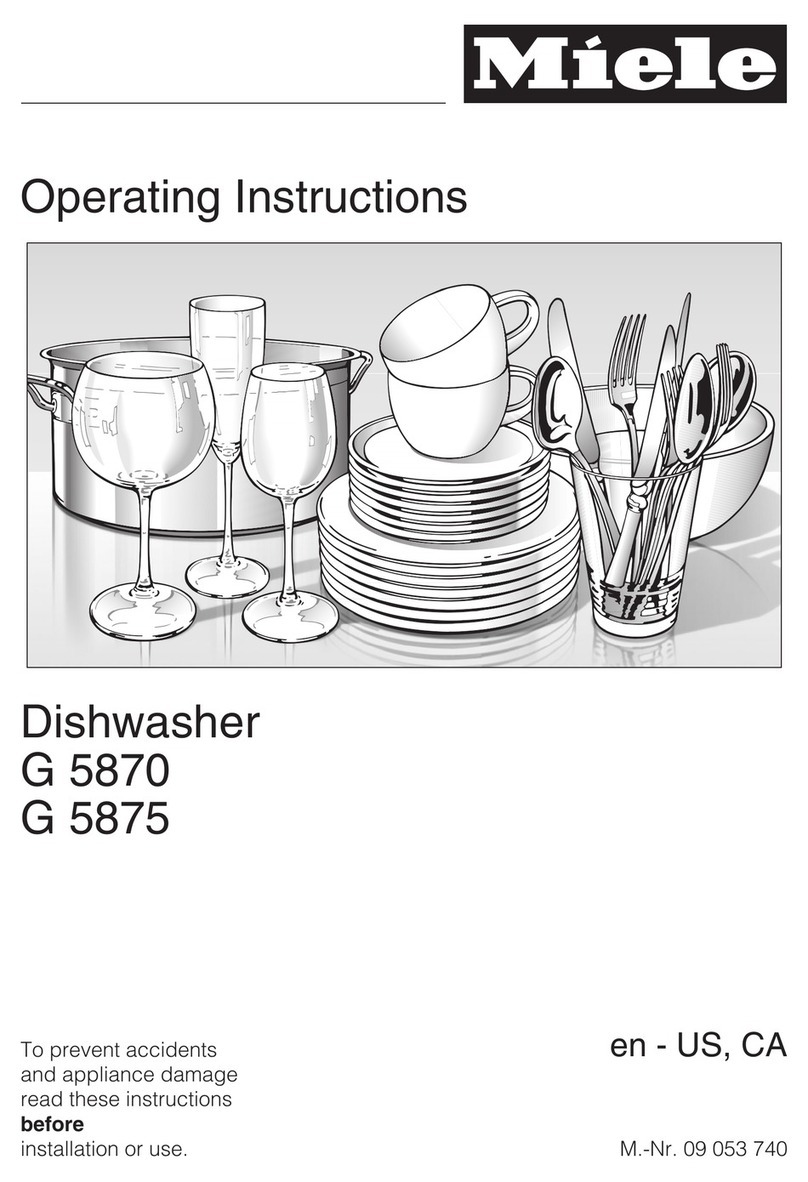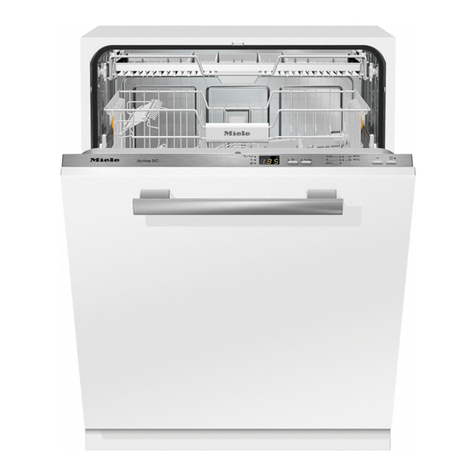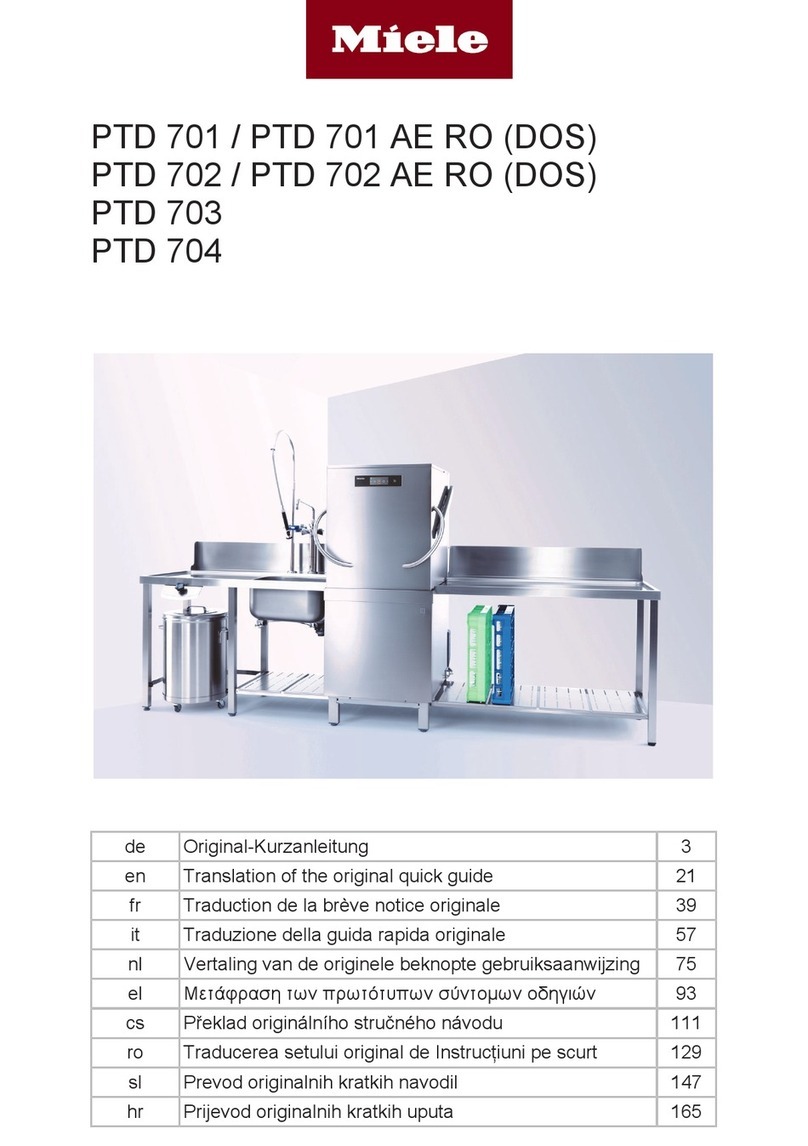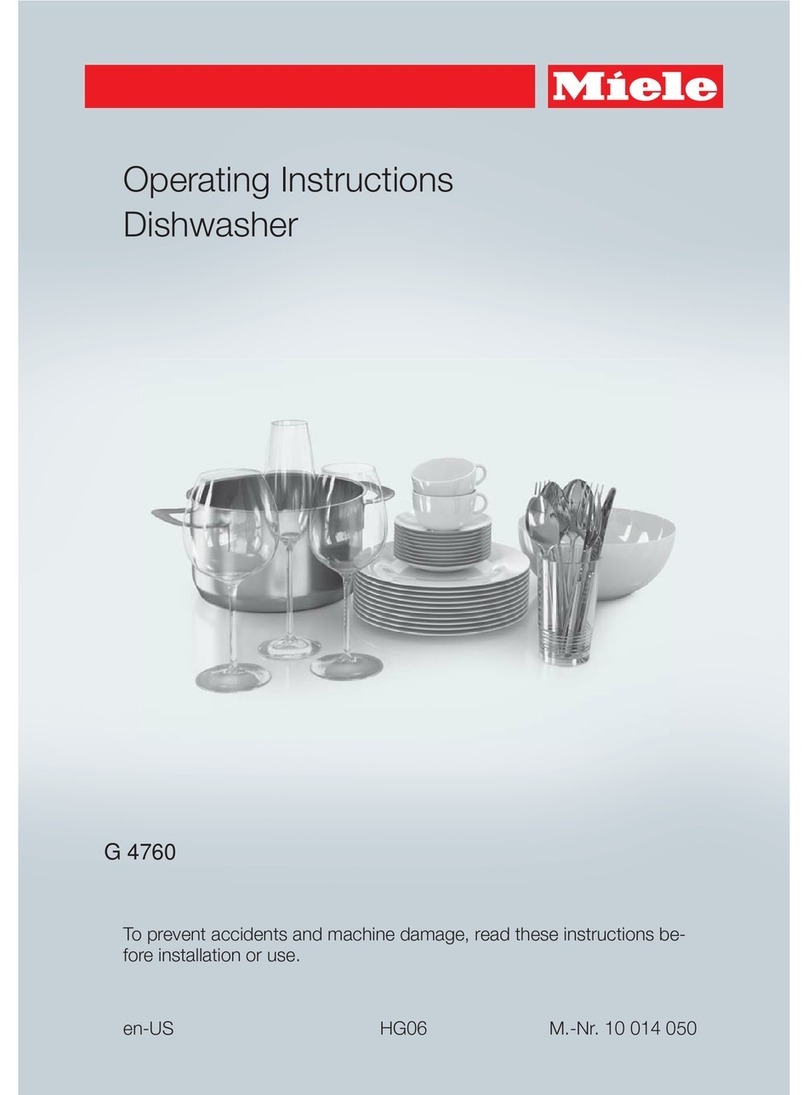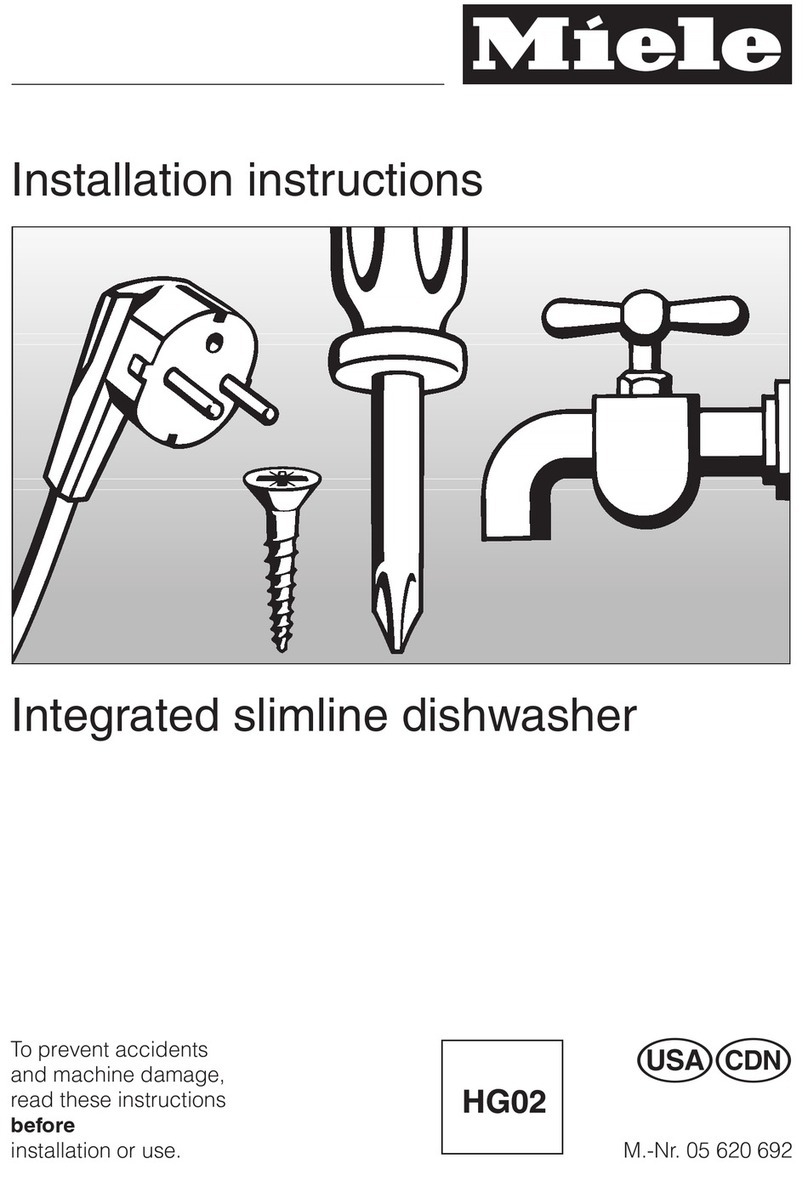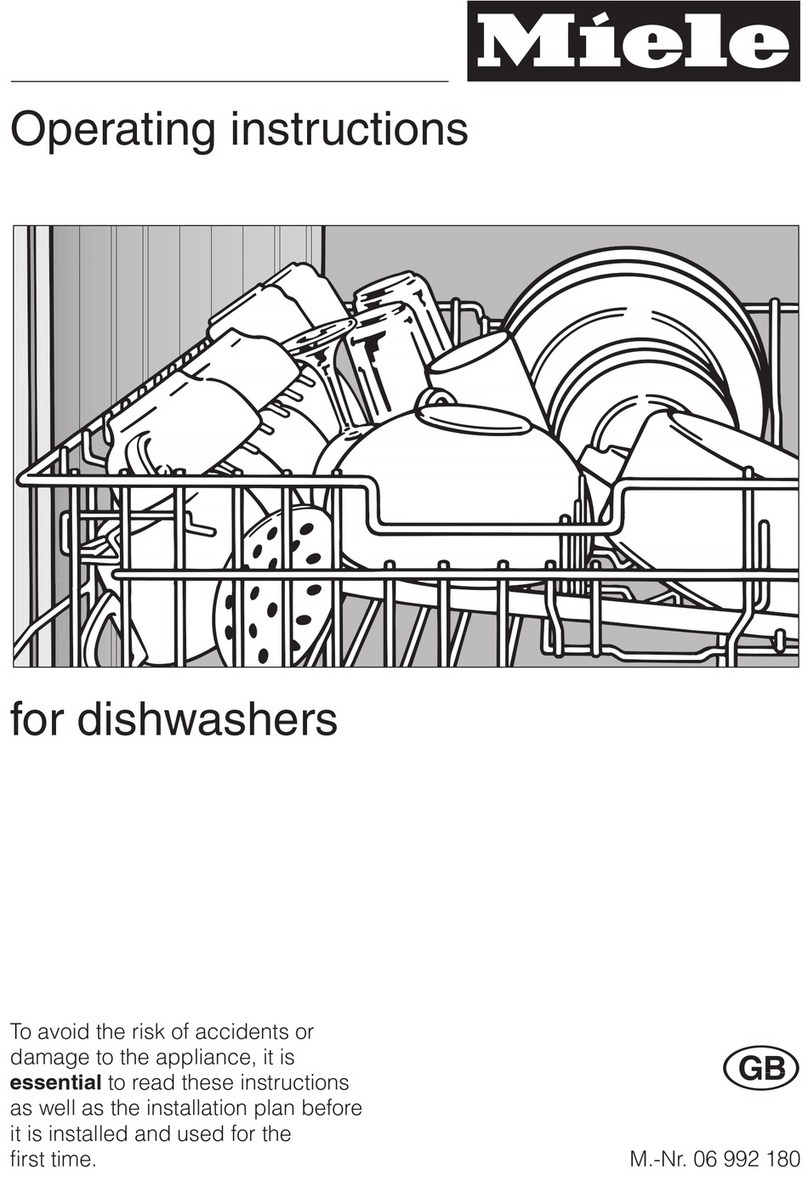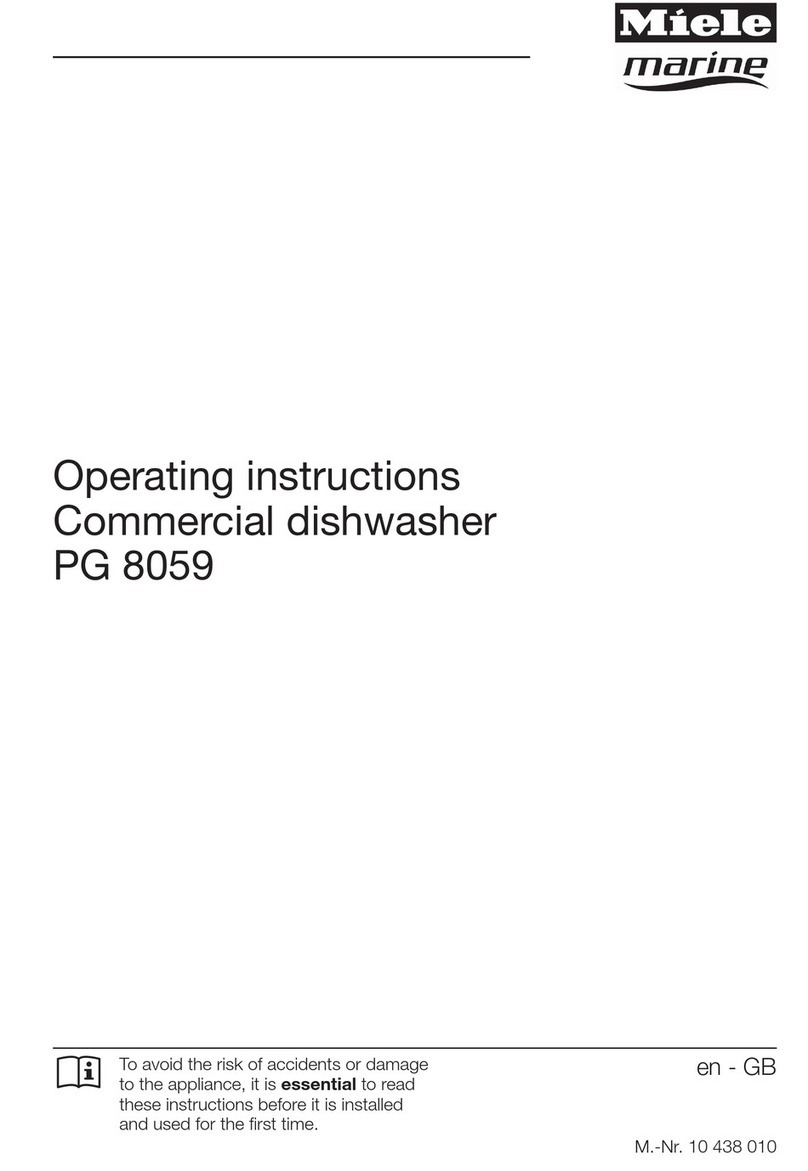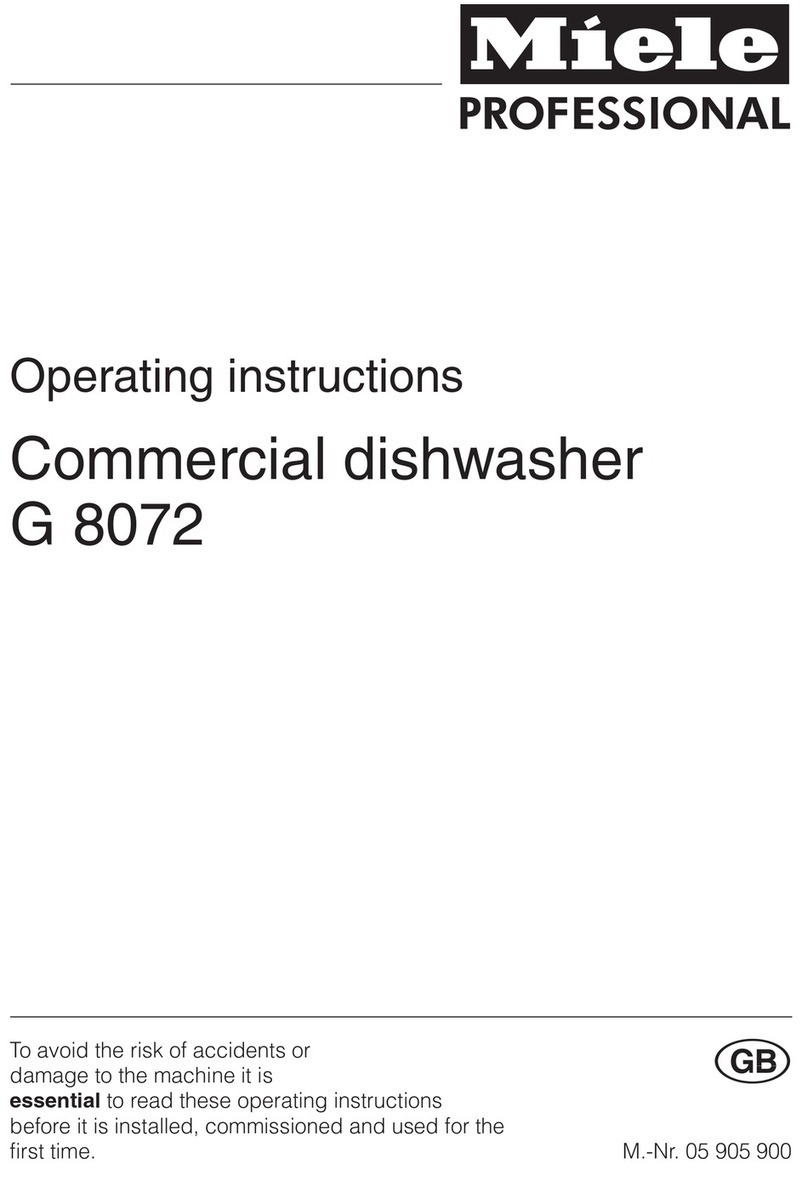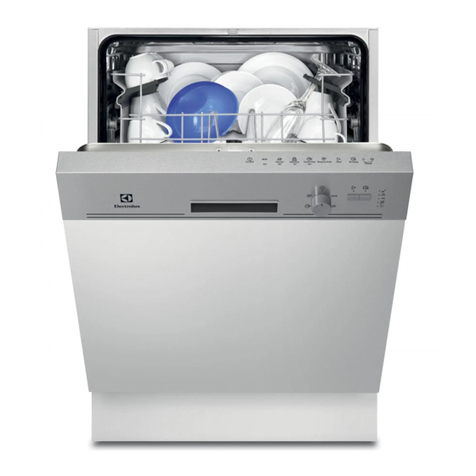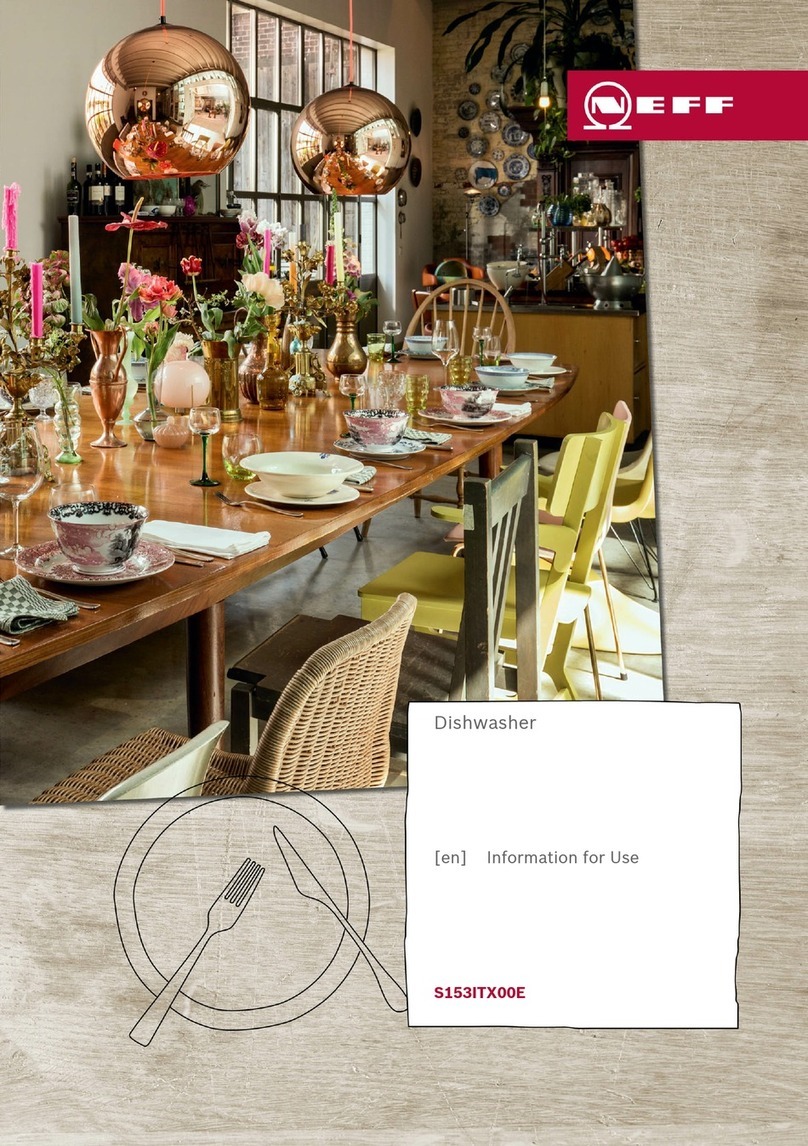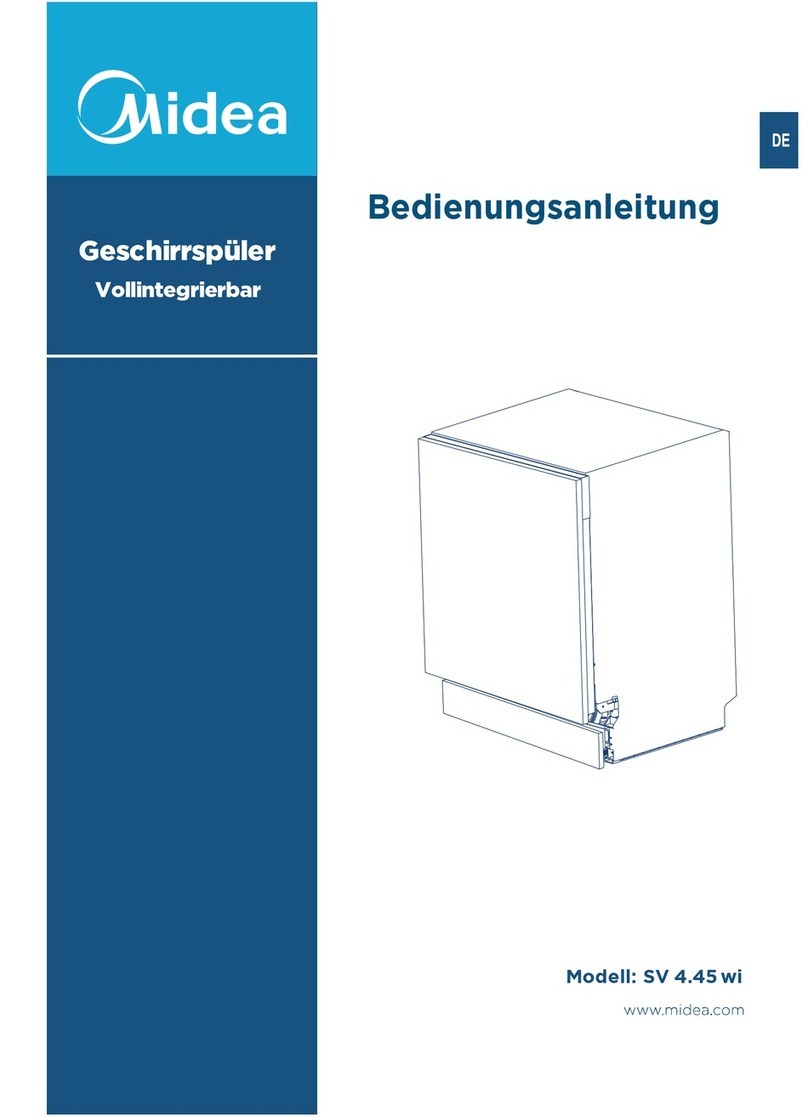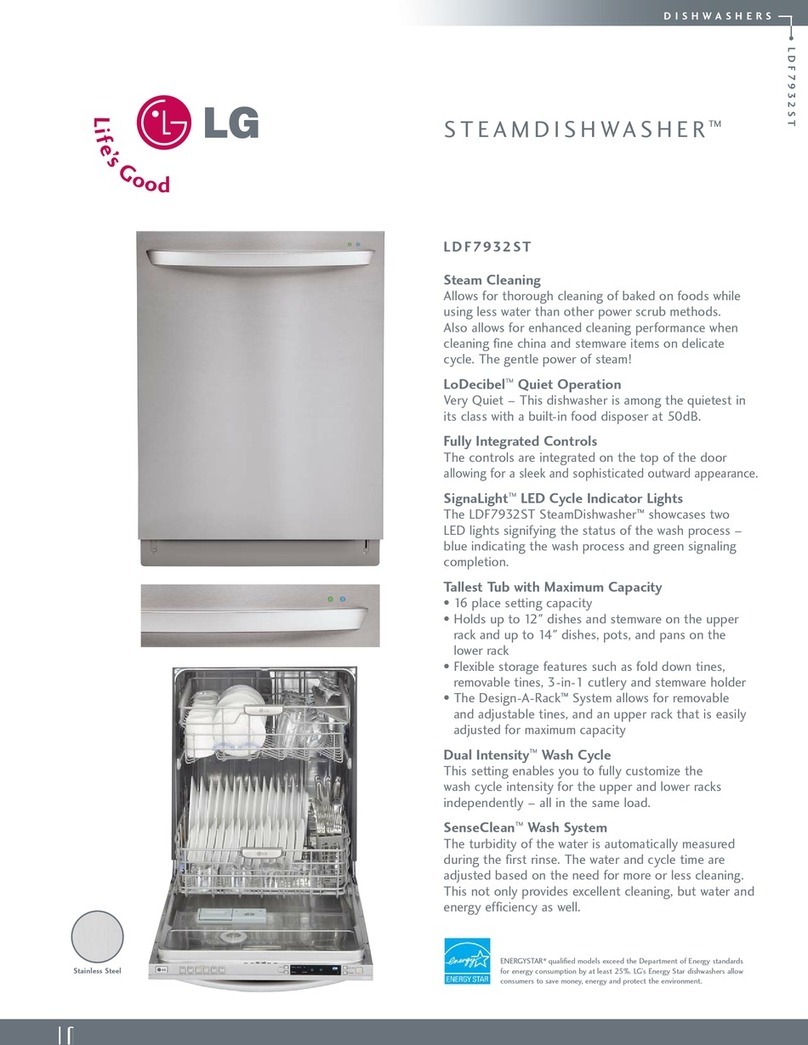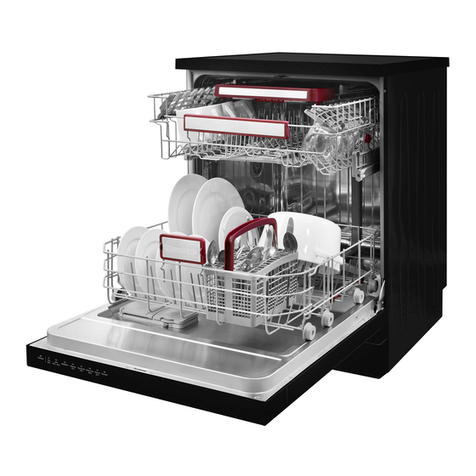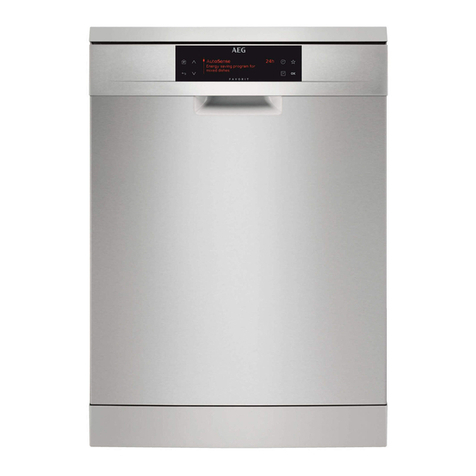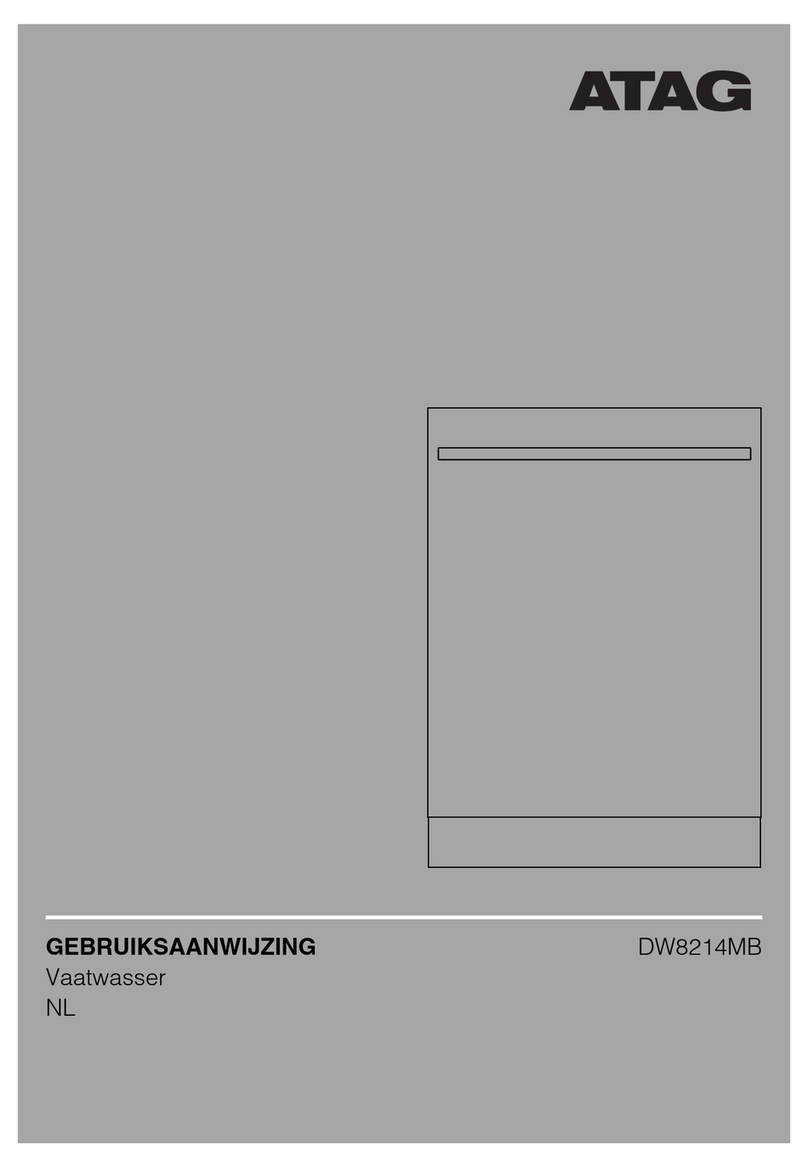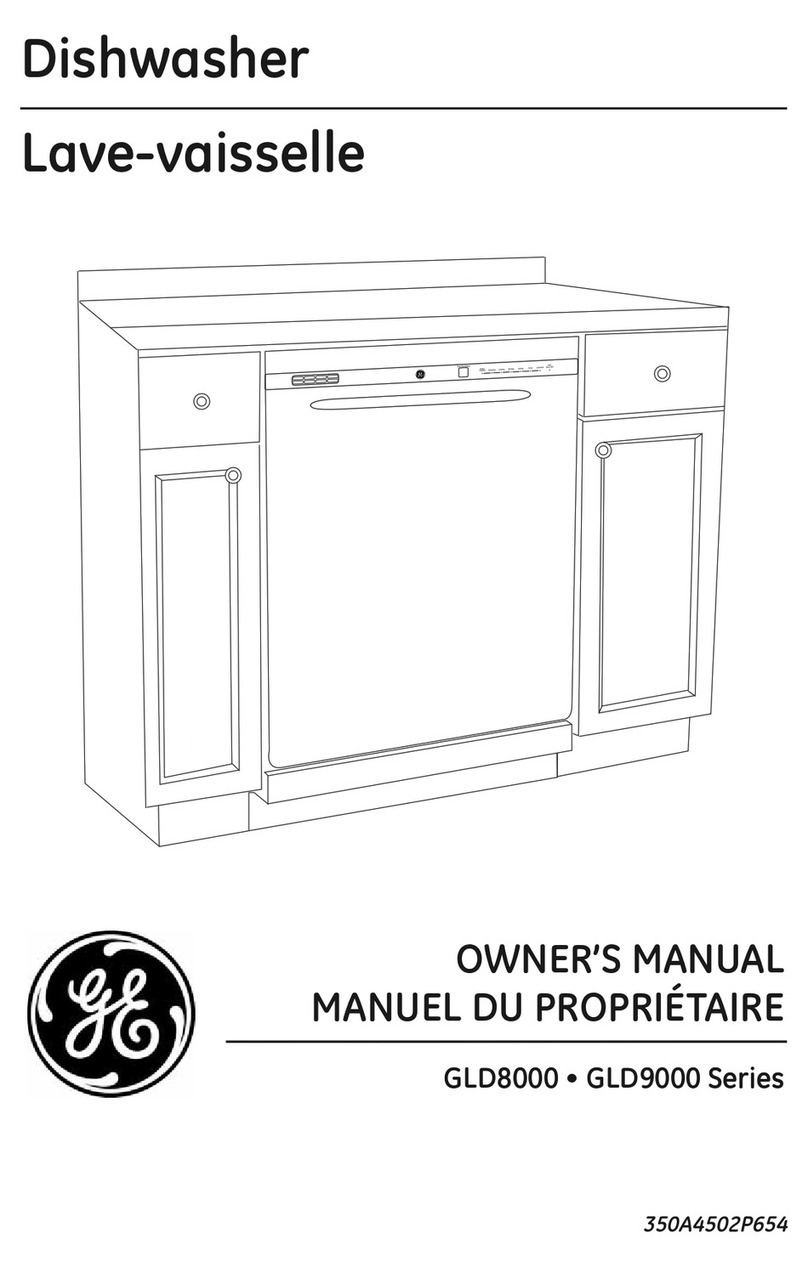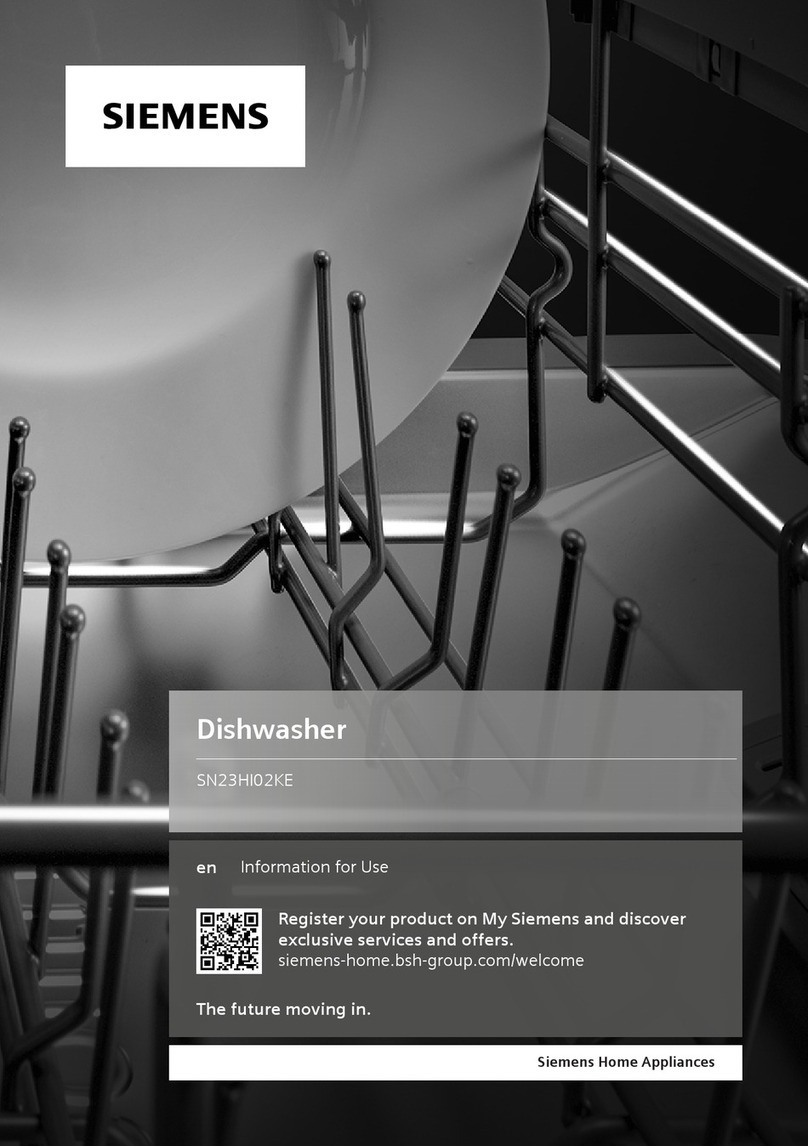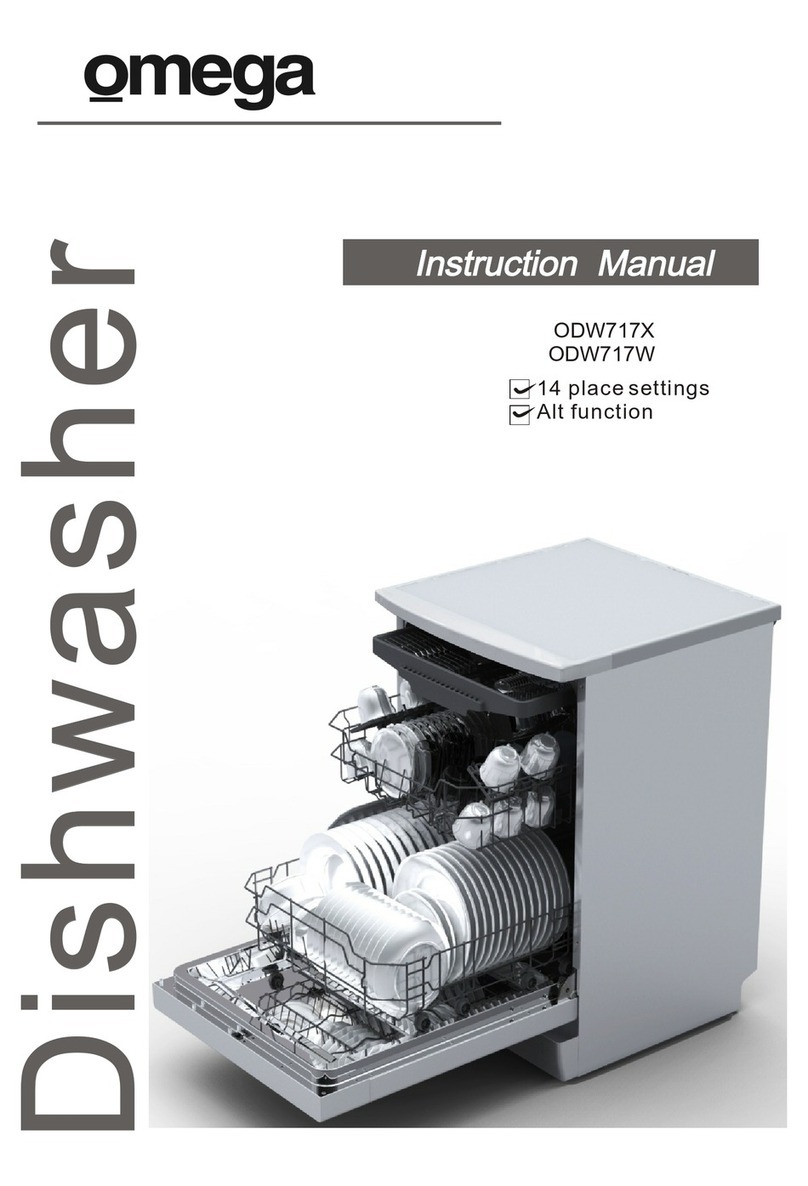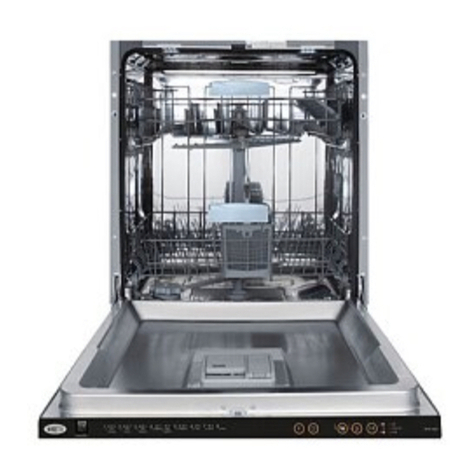
~The commercial dishwasher is
designed for use with water and
additive cleaning agents only. Organic
solvents must NOT be used as,
amongst other things, there is a risk of
explosion (Note: There are numerous
organic solvents that do not harbor the
risk of explosion, but other problems
may occur such as damage to various
types of rubbers and plastics).
~Ensure that no acid or solvent
residues, especially hydrochloric acid
or chloride solutions, get inside the
wash compartment when loading the
appliance, nor any corrosive iron
materials!
Only trace amounts of solvents may be
present in the soiling.
~Never hose down the commercial
dishwasher or its immediate
environment, e.g. with a water hose or
pressure washer.
~To avoid corrosion damage, ensure
that the stainless steel exterior does not
come into contact with solvents
containing hydrochloric acid / vapors.
~After work on the tap water system,
vent the water supply lines to the
commercial dishwasher.
Otherwise the water softening
equipment may be damaged.
~Any repairs to the appliance during
the warranty period must be performed
by Miele Service, otherwise subsequent
damage will no longer be covered by
the warranty.
~Do not step or sit on the open door.
The commercial dishwasher could tip
over or be damaged.
~Use caution when loading items with
sharp, pointed ends upwards. Load
them into the appliance in such a way
that they cannot cause any injuries.
~Take the high temperatures into
account when operating the
commercial dishwasher in the upper
temperature range. When opening the
door there is a risk of burning or
scalding! Before opening, allow
baskets and inserts to cool. Empty any
hot water residues left in scoop-shaped
and hollow items into the wash
compartment.
~Do not touch the heating elements
or the heated surfaces on the floor of
the wash compartment when you open
the door during or at the end of the
washing program. They may still cause
burns even several minutes after the
program has ended.
~All scoop-shaped items must be
emptied before loading.
Safety Instructions and Warnings
7

